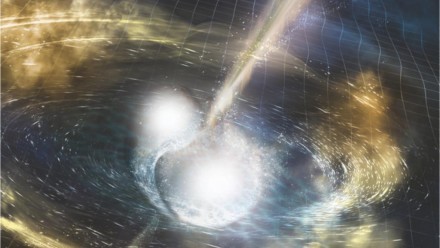Gravitational waves from newborn neutron stars
Synopsis
When two neutron stars collide, what is left behind? We develop methods and look for gravitational-wave signatures from the newborn remnant object after the collisions of binary neutron star systems.
Research fields
Astrophysics
Description
When you take two neutron stars and smash them together, what do you end up with? That was the question gravitational-wave astronomers were asking themselves on August 17th, 2017, after capturing the elusive gravitational-wave signature of just such a collision. The most probable answer was that the collision would instantly create a black hole, but maybe not. Maybe the collision would create a newborn neutron star from its two parents. But would this baby neutron star be stable enough to survive on its own, or would it be doomed to collapse into a black hole?
One way to answer these questions would be if we could detect gravitational-waves “crying” from the newborn neutron star after its birth. That would indicate that the neutron star is alive and well, and its gravitational-wave signature would tell us a lot about its properties, which we could then compare to the properties of its parents. On the other hand, if we cannot “hear” anything after the collision, that might indicate that the newborn neutron star decided to become a black hole instead.
Researchers at the Centre for Gravitational Astrophysics have developed a robust algorithm to search for gravitational waves from newborn or “remnant” neutron stars [1, 2]. While no gravitational waves were detected from the first observation of gravitational waves from the collision of two neutron stars, GW170817, we are continuing to develop new and potentially more sensitive algorithms and to keep looking for newborn neutron stars [3].
[1] Sun & Melatos, Phys. Rev. D 99, 123003 (2019)
[2] Abbott et al. (LIGO Scientific Collaboration, Virgo Collaboration), Astrophys. J 875, 160 (2019)
[3] Banagiri, Sun, Coughlin & Melatos, Phys. Rev. D 100, 024034 (2019)





